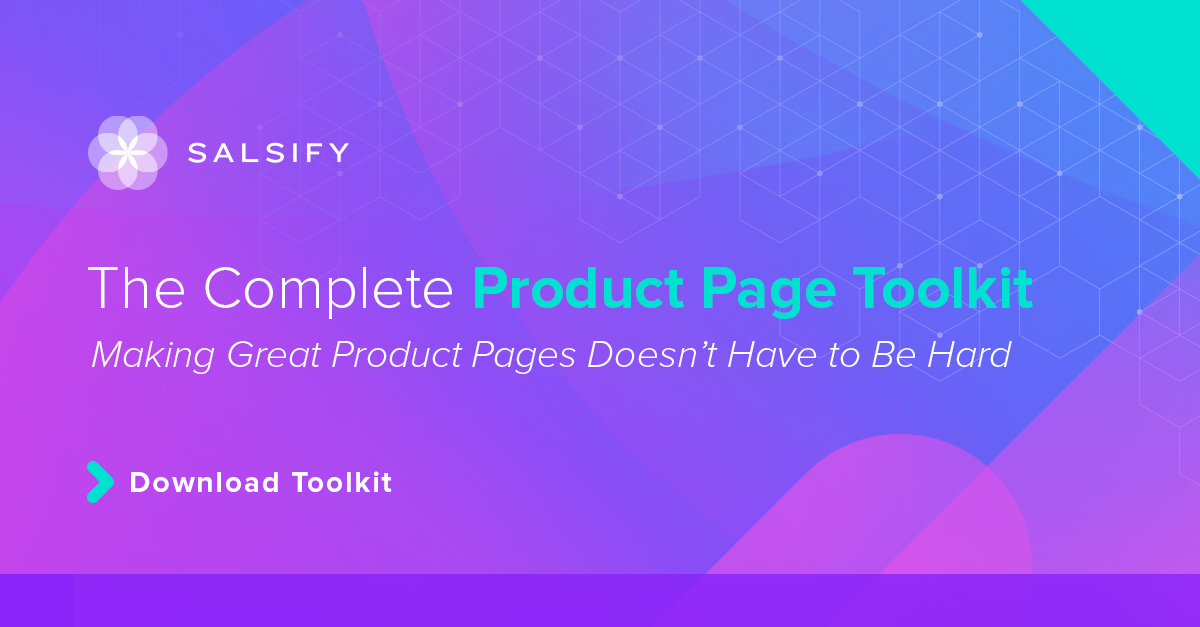Essential Product Page Optimization Strategies To Drive Digital Shelf Success

Ever taken a guided historical tour?
Sure, sometimes the costumes can be a bit much. But that being said, many can still offer visitors a compelling narrative that not only informs but entertains — providing added value, helpful information, and perhaps some unexpected delight along the way.
When it comes to product page optimization, brands should strive to provide that same level of experience for their shoppers. A well-crafted product page will not only ensure that customers find what they are looking for (the bare minimum) but also engender trust, compel future action, and inject a touch of memorable fun into the proceedings.
Here are some effective product page optimization core principles, including examples of what works — and doesn’t — when trying to make your brand stand out to consumers on the digital shelf.
Why Is Product Page Optimization So Important?
When shopping in person, a customer may be less inclined to drive around for a few hours, visiting different stores and weighing their available options.
Online, however? Amid the noisy digital marketplace where other storefronts are merely a click away, the ability to capture and maintain consumer attention will always need to be your brand’s top priority.
To be clear, optimizing your product pages isn't just about sprucing up visuals or tweaking the layout. Instead, think of it as a way to ensure that every visitor to your page(s) undertakes a seamless, engaging, and informative journey from arrival to checkout. An effective product page will anticipate customer questions or concerns, demonstrate how your products solve their problems, and gently nudge them to purchase (and beyond).
It’s extremely important to keep a watchful eye on every page element — from images to descriptions to customer reviews — and ensure they’re aligned in their efforts to convert and retain customers.
Guiding Principles of Effective Product Page Optimization
Here are some core principles to bear in mind while optimizing your ecommerce product page. These guiding values are critical for not only attracting attention but also fostering trust and extended engagement throughout your product pages.
Clarity Is King
Always use straightforward, clear language, and ensure that product features, benefits, and prices are easily understood.
Remember: Customers will be scouring your product pages for confirmation that your product can address their problems, pain points, or specific use cases. If your products are capable of doing that, make sure it’s as clear as possible to the shopper.
Consistency Builds Trust
Consistency, particularly across channels, is crucial. Your product pages should maintain a consistent tone, style, layout, and quality across all platforms. Customers will feel reassured by the reliability and professionalism of your brand, wherever they may encounter it. A robust product information management (PIM) solution, for example, can be a tremendously helpful tool for this.
Inspirational Engagement
Don’t forget the “wow” factor. These elements not only provide a touch of fun as customers explore your product pages, but they can also increase the likelihood of purchase and repeat business.
Best Practices for Product Page Optimization
So, how can brands effectively apply these principles in the real world? Here are some best (and not-so-best) practices that demonstrate how clarity, consistency, and engagement can transform your product pages moving forward.
Bad: Low-Quality, Low-Value Images
Remember: When shopping online, customers can’t hold your product in their hand, let alone see it in action. As such, your product pages can’t rely on blurry, poorly lit, or misleading photos that fail to convey the value of your offerings to the consumer.
Beyond the immediate impact, these kinds of assets can erode customer trust in your brand over the long run. Don’t let it happen to you.
Good: High-Quality, High-Value Images
Instead, focus on providing high-quality images and videos that showcase your offerings from multiple angles and in different settings. Lifestyle photos and 360-degree shots, along with infographics or comparison charts, can all help customers visualize your products’ varied applications, helpfully guiding them along to purchase.
Enhanced videos, such as how-to guides or feature demonstrations, can also go the extra mile in providing shoppers with a deeper understanding of your offerings.
Bad: Missing or Incomplete Information
Customers simply won’t buy your products if you fail to demonstrate how they can fulfill their specific needs and requirements or, even worse if you fail to mention your products' features at all.
In action, these missing details can be a disastrous barrier to customer satisfaction and sales. When product pages omit critical information such as dimensions, materials, or specific features, customers may hesitate or look elsewhere before making their purchase.
Good: Extremely Detailed Descriptions
For better results, provide detailed, clear descriptions that communicate the value, functionality, and available options for every single one of your products. You can also incorporate user-generated content (UGC), such as multimedia or customer reviews, to provide additional social proof that reassures your customers.
If you provide a particularly strong deal relative to your competition, you could also provide shoppers with a side-by-side comparison of each brand’s pricing, features, and more. Stay thinking about the ways your customers shop for products while anticipating the questions they’ll be asking — and thoroughly answer them.
Bad: Inconsistent Experiences or Info Across Channels
While detailed product descriptions are absolutely crucial, they can leave the door open for errors, specifically, providing inconsistent product information across the various product pages in your network. This will, at best, confuse the customer, and at worst, drive them into the arms of competitors who may present themselves as more reliable and trustworthy.
Make sure that your product inventory management tool is consistently populating your product pages with accurate, consistent information.
Good: Memorable Storytelling
Your descriptions don’t just have to be a dry recitation of your product's various features. Your product page is a fantastic touch point for reinforcing your brand’s vision and mission with shoppers.
Creative, informative, and persuasive narratives that tell the story behind a product or brand or how a customer might fit into your brand’s community can transform “the small print” into something quite memorable for your shoppers.
Give Your Shoppers What They Want
Your product pages are arguably the most powerful tool in your marketer’s arsenal. By embracing clarity, consistency, and engagement, brands can transform their product pages into something more than a catalog entry: a compelling story that not only informs and delights but converts visitors into loyal customers.
Give your customers the information they need to trust you, and they’ll keep coming back to reward you, time and again.

The Complete Product Page Toolkit
Shoppers hate bad product pages, but that doesn’t mean they have to hate yours. Download our toolkit for deeper insight into how to meet — and exceed — shopper expectations.
DOWNLOAD TOOLKITWritten by: Chris Caesar
Chris Caesar (he/him) is a professional writer with two decades of experience working with national publications, as well as top software-as-a-service (SaaS) and technology brands. He is passionate about crafting high-quality, lead-generating content that drives awareness and action.
Recent Posts
Ecommerce Marketing
|
12 minute read
The Art of the Impulse Buy: 70% of Shoppers Say Discounts Drive Unplanned Purchases — Here’s Why
Read More
Ecommerce Marketing
|
10 minute read
What Does It Take To Have a Good Brand Reputation in 2025?
Read More
Ecommerce Trends
|
11 minute read
What Is Commerce Media — and How Can It Optimize Your Marketing Spend?
Read More
Subscribe to the Below the Fold Newsletter
Standing out on the digital shelf starts with access to the latest industry content. Subscribe to Below the Fold, our monthly content newsletter, and join other commerce leaders.
The Complete Product Page Toolkit
Shoppers hate bad product pages, but that doesn’t mean they have to hate yours. Download our toolkit for deeper insight into how to meet — and exceed — shopper expectations.
DOWNLOAD TOOLKIT

.svg)